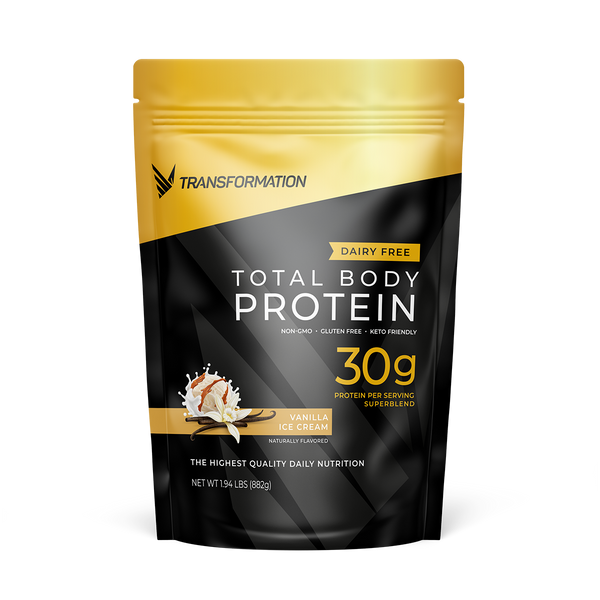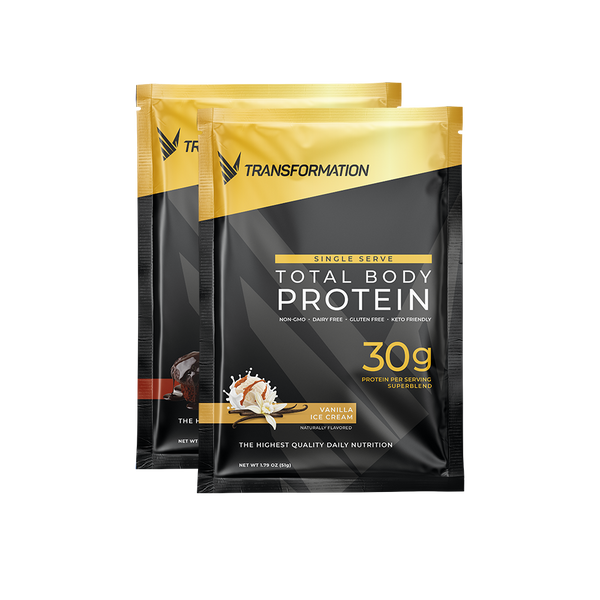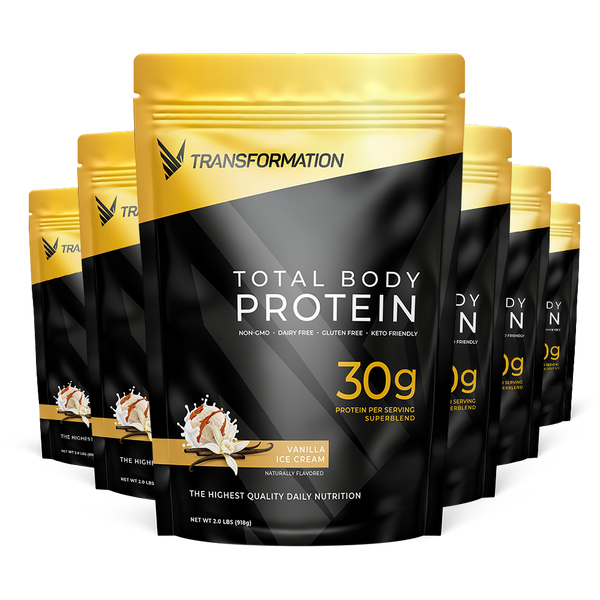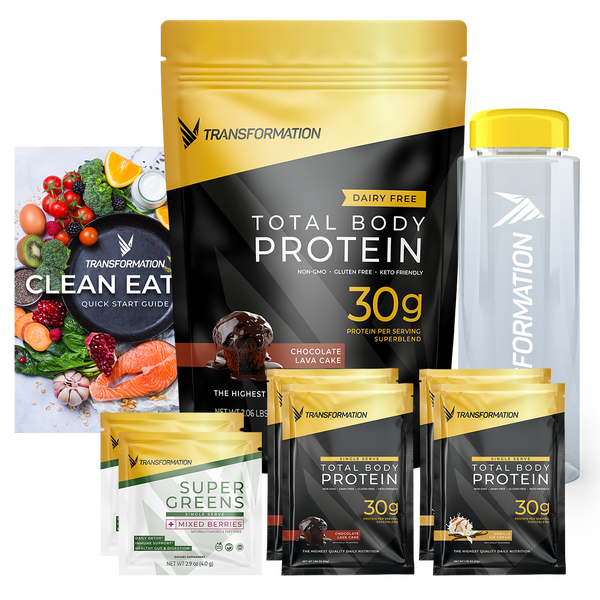What’s The Best Protein Routine for Your Fitness Goals?

By: Brian Wargula
Published on Mar 05, 2021
So you’ve decided to make a change and are ready to reach new heights in your health goals. But where to begin? And how do you augment your diet in the right way to help make those goals attainable? A short answer is with the right protein and physical training. To make outlining your objectives easy, utilize the research-backed S.M.A.R.T. module to be on the fast track to the best you’ve ever felt.
S.M.A.R.T. Specific, Measurable, Attainable, Relevant, Timely
-
Specific: Drill down into the details. When you are staying too broad, it sets you up for failure. For example, you want to avoid a vague goal like “I want to get healthy.” A specific example would be wanting to increase your weekly activity level to 3 moderate workouts per week.
Measurable: How are you going to measure your goals? A great place to start would be thinking about the frequency of workouts. Aiming to get within at least 3 workouts a week should be your minimum, but can go up to as many as 2 workouts a day. Tracking your weight and BMI changes are another way to measure your progress. Using the right amount of protein can be the fastest way to trim down or gain muscle mass.
Attainable: You can’t hit unrealistic goals. Explore the thin line between unrealistic goals and what’s actually achievable. Nutritionists and fitness experts believe that goals are not complete without the right diet. Don’t set yourself up for failure. Eating right alongside your increased exercise routine will get you in shape, quicker.
Relevant: Make your fitness goals relevant to your overall sense of self. Do these goals fit into your lifestyle? Part of setting yourself up for continued success is having diet and exercise goals that fit into your everyday routine. Establishing a regular, healthy protein amount to include in your everyday macronutrient consumption is key.
Timely: Develop a timeframe and hold yourself accountable. One month to 60-days can be all you need to transform your body. Set a standing date to workout with a friend or join a fitness challenge to have others help you hold yourself accountable. Taking before and after pictures is also a great way to track your progress and motivate you for the future.
Calculate How Much Protein You Need to Achieve Your Fitness Goals
Protein needs will vary depending on the individual’s activity level, age, bodyweight, gender and fitness goals. Regardless of all these factors, for an average adult the RDA (Recommended Dietary Allowance) is approximately 0.8 grams of protein per kilogram of bodyweight. Think of it more as a recommendation to maintain your health, rather than a serving suggestion. Think about the factors that will weigh into your protein needs and then try calculating it for yourself.
Activity Level - What is your daily routine like? Would you describe your activity level as light, moderate, or heavy on the exercise? It’s important to keep in mind all of the ways that your body is in motion throughout the day. For example maybe you don’t hit the gym everyday but you bike or walk 5+ miles for a commute. If you are keeping track of your health with an app or watch, consider yourself at least in the moderate category if you are hitting 10,000 steps or more per day.
-
Body Weight - The more you weigh, the more your body will require more energy throughout the day to propel yourself through your mental and physical exertions. This naturally leads to needing more protein. Whether you weigh more from body building or are simply just tall and a larger person, you’ll want to factor that into how much protein you should be consuming each day if you want to maintain your weight and muscle mass.
Age - As we age our bodies process protein less efficiently and therefore we need more of it to maintain muscle mass and strength. Maintaining a higher protein intake after the age of 45 is particularly important for those that are moderately to heavily active. Supplementing where needed in the diet not only adds extra energy to your day, but experts say it also contributes to bone health, cellular health and your body’s ability to perform essential physiological functions.
Gender - Unsurprisingly, men typically need more protein than women simply because they tend to have a higher body mass index (BMI). However women who are pregnant or nursing will require more daily protein intake and along with women who have passed menopause. Taking into account the male vs. female fitness goals is something to consider when calculating daily protein intake.
Fitness Goals - Are you trying to slim down or are you trying to bulk up? This may be the first question you’ll want to consider when looking at how much protein you’ll need to achieve your body goals. For those looking to gain muscle mass it’s critical to refuel your muscles with protein right after a workout. If you are looking to trim fat and slim down without losing muscle mass, then following a calorie-restricted diet without losing muscle mass.
Trial Different Protein Routines for Your Fitness Goals
Physical training can take a toll on our bodies, and as we build new muscle we need extra protein to aid in repairing our muscles. Depending on your desired outcome, how you achieve fitness goals will lead you to different amounts of protein intake.
What best represents your fitness goals?
-
Building muscle: If you are looking to bulk up, the best time to take protein powder is when you have just finished a workout. For active adults the international sports science association recommends 1.2 up to 3grams per kilogram of body weight. Try adding a protein shake after every hard-earned weight session to see more results.
Losing weight: Protein does more than just maintain muscles, it also helps you avoid unhealthy foods. Adding more grams of protein to your meals will leave you feeling fuller, longer. It takes more energy to metabolize which translates to a longer time between eating and feeling hungry again. Having a protein powder in a shake or a smoothie is a convenient way to get your protein in and can also be the way to consume less calories.
Maintaining weight: Because proteins have a higher thermic effect than other foods, your body burns more calories and metabolizes them faster. Try to add more lean protein in your diet with one or two meals a day. Use a protein powder supplement with egg whites and plant-based protein that is dairy-free. This is also more satiating than binging on carbs or fatty foods, which makes controlling your weight and calorie intake easier.
It’s best to spread out your protein intake throughout the day, not just around your workout times. Consuming it within 30 minutes after workout to help speed up the muscle repair process. It’s important to give your body time to adjust to added protein, so upping your intake slowly when trying to reach new fitness goals.
Transformation Protein powder is a fast and easy way to add high-quality protein to your diet. From protein smoothie bowls to shakes, you can enjoy Transformation Protein in many delicious ways—making it easier for you to configure the right amount for building muscle, losing or maintaining weight.







